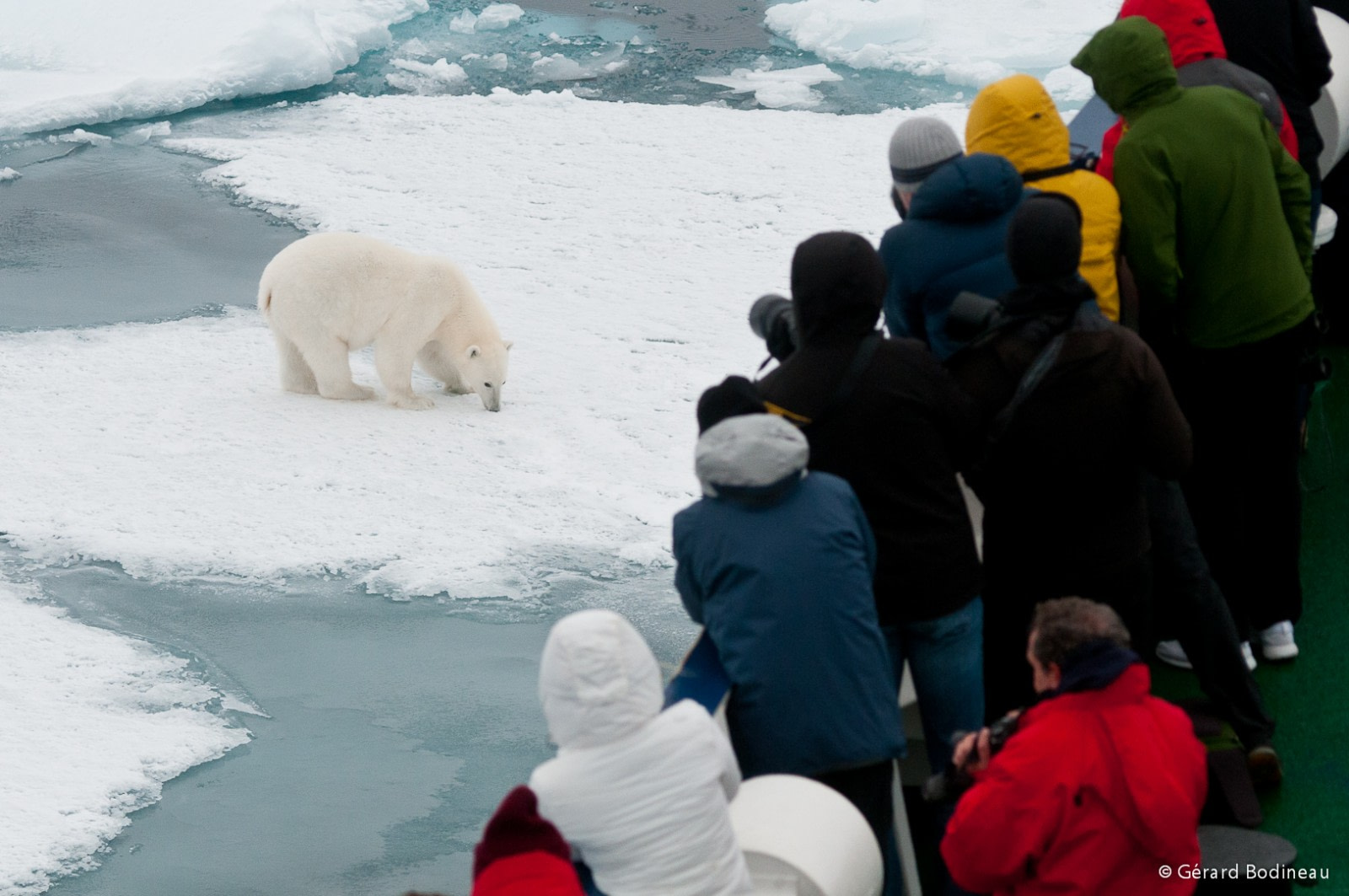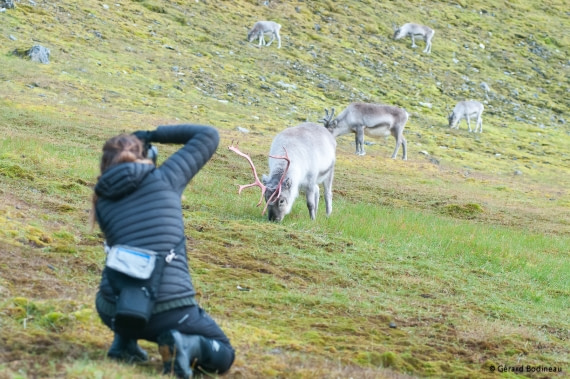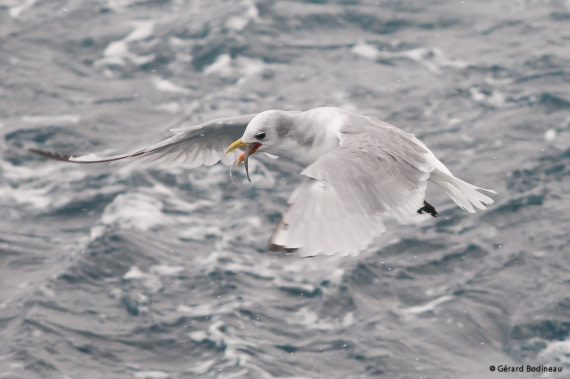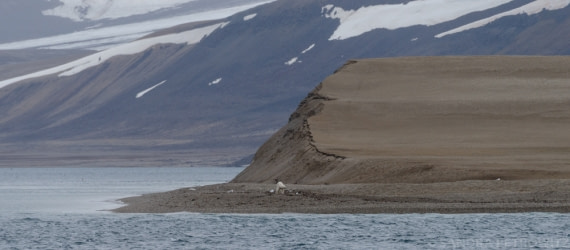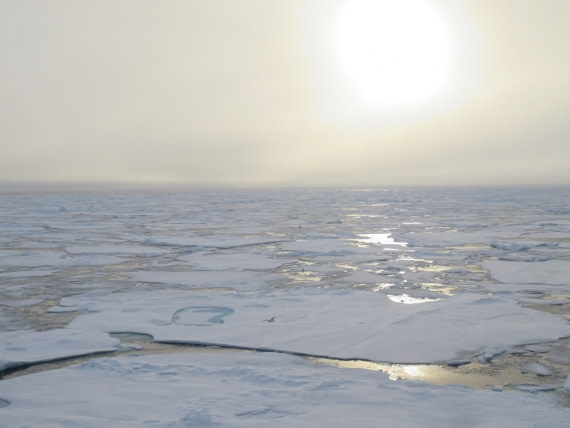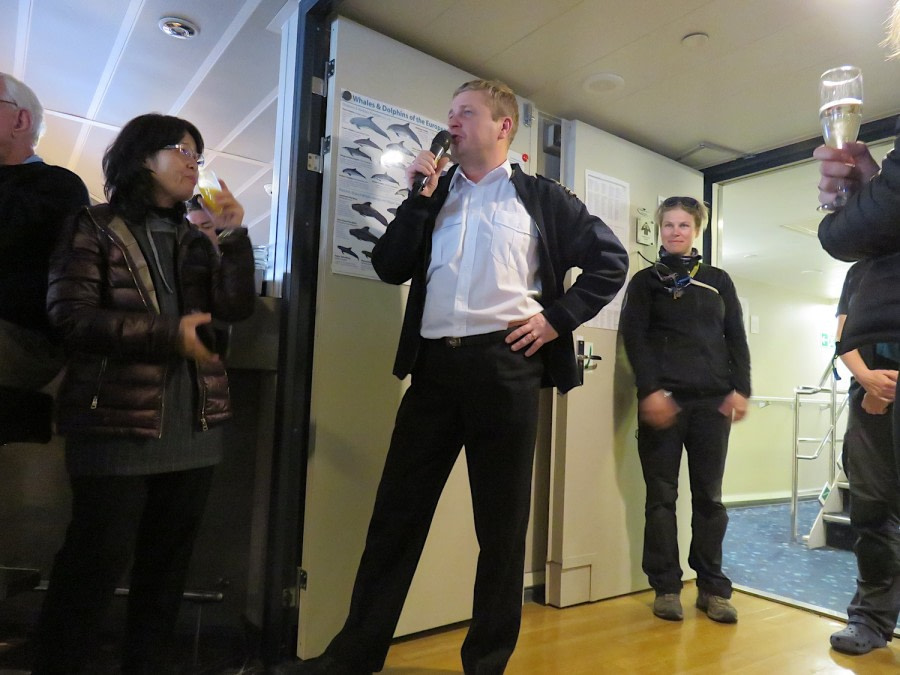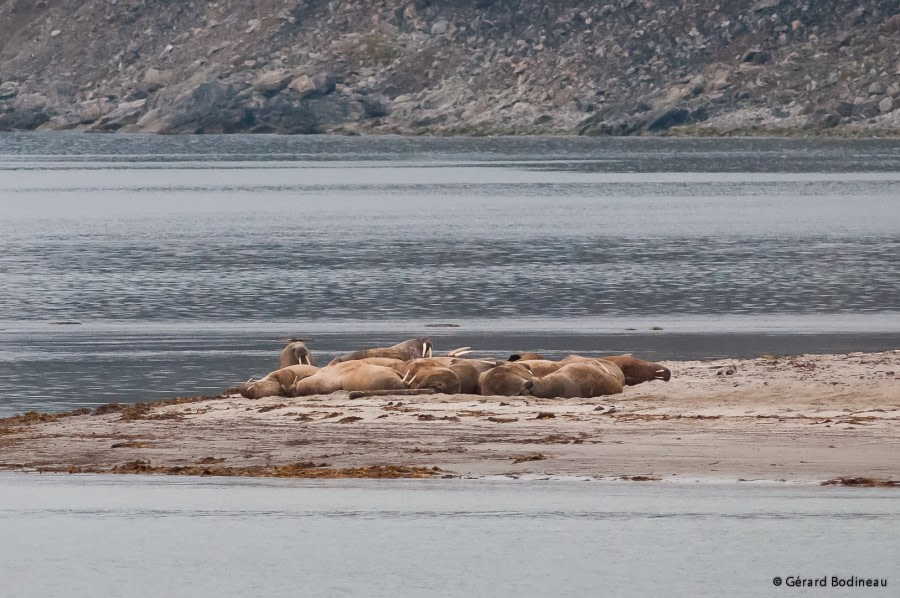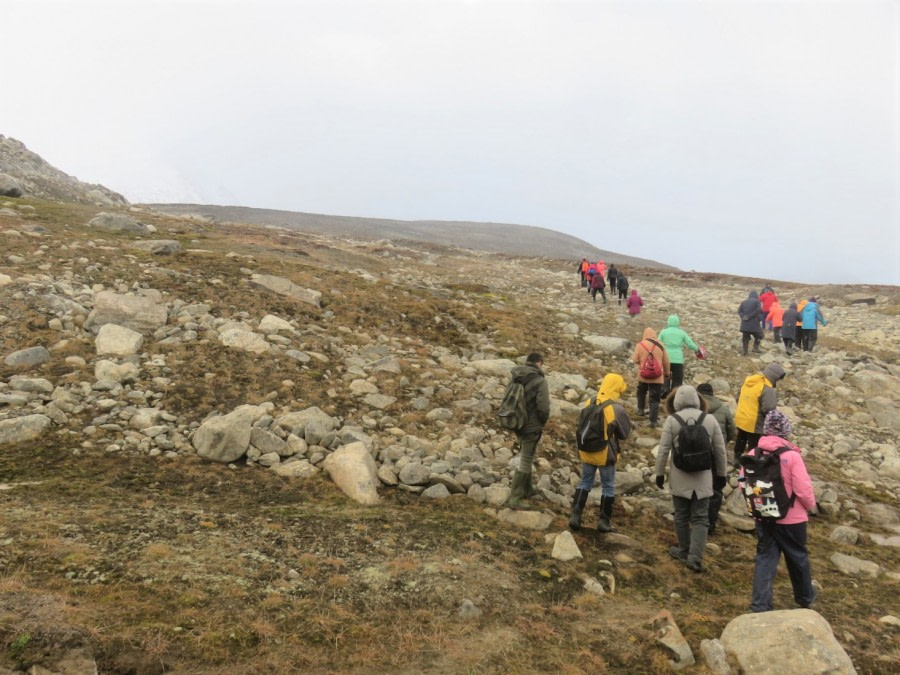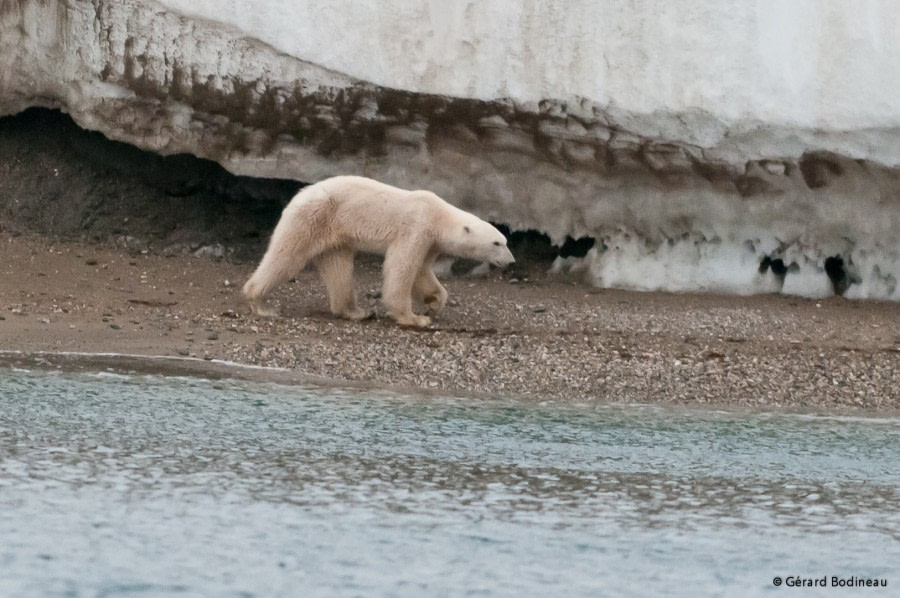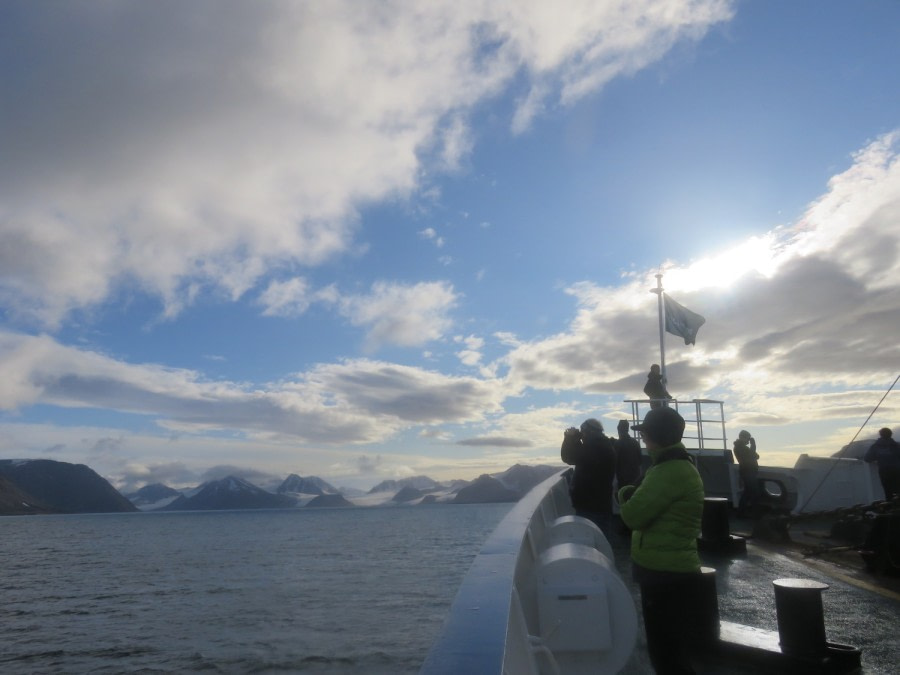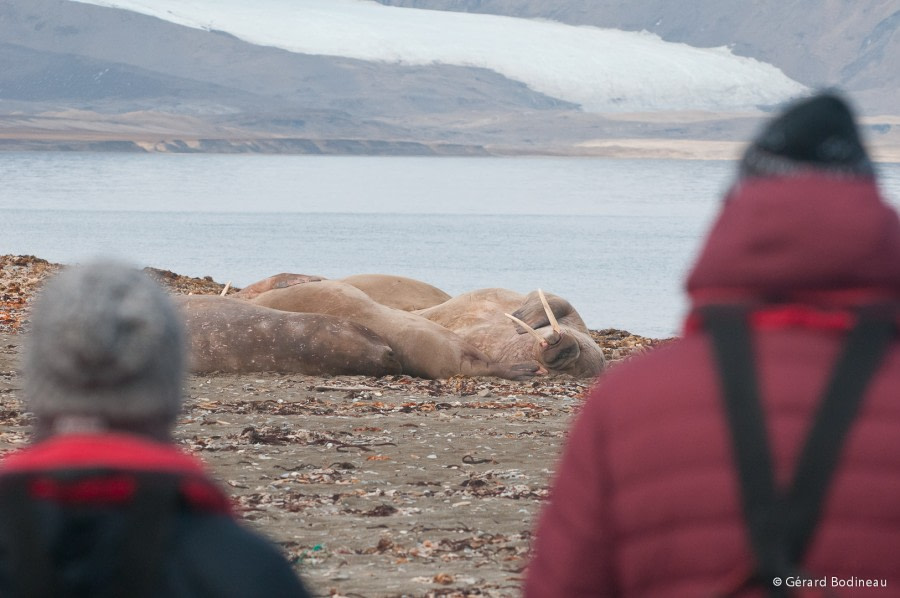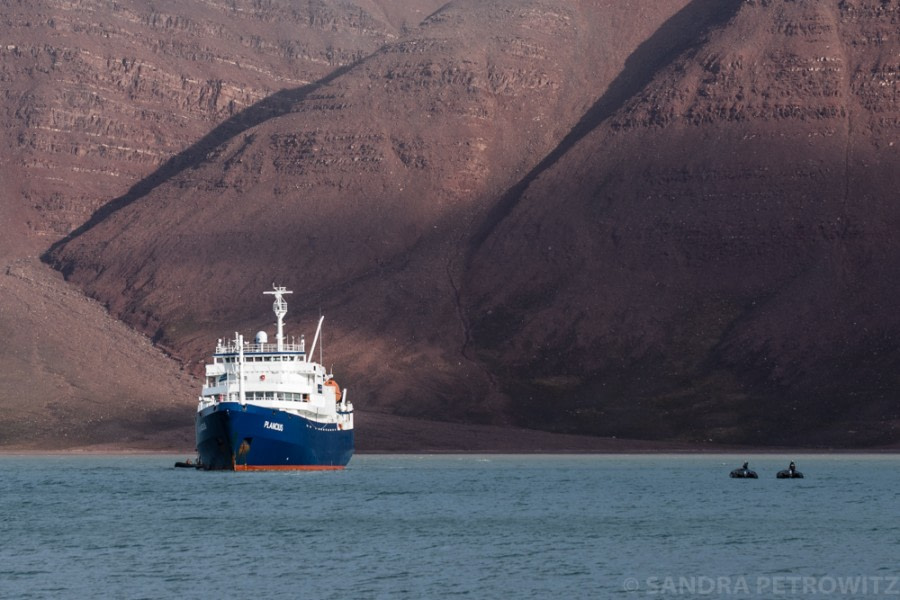| Date: |
02.09.2018 |
| Position: |
81° 58.0‘N, 020° 20.2‘E |
| Wind: |
E 4 |
| Weather: |
overcast |
| Air Temperature: |
+2 |
We steamed due north through the night, directly towards the heart of the Arctic Ocean. Lynn woke us a few minutes later than usual, treating us to a small lie-in. Plancius had made a lot of progress, and by breakfast time we were already approaching 82°N. There was a palpable sense of autumn in the air; sullen skies, occasional snowflakes, and a stiff breeze from the east reminded us that the summer is fleeting in the high Arctic and that soon it will return to the dark of the polar winter.
In the morning we were treated to a set of extended recaps from the Expedition Staff. Shelli gave a talk about Walrus, introducing us to their physical characteristics, their impressive feeding habits, and their love of body contact with other walrus, or thigmotaxis, when they haul-out on beaches to rest. Shelli rounded-off her talk with a guide to the other types of Pinnipeds we might encounter amongst the ice, this included some tips and tricks for identifying the different species. Sandra was next with a presentation about the seasonal cycle in Svalbard; she explained how the environment changes drastically in just a few months as the seasons progress from spring, through the brief summer, and into autumn by the end of August. The seasons dictate the rhythm of life in the high Arctic and Sandra showed us how plants, birds, mammals, weather, and landscapes evolve. Johanne was next, with a talk about sea ice. Right on cue we had our first glimpse of ice floes through the lounge windows, the fragmented floes giving us a small taste of what was to come. Johanne explained that Arctic sea ice is an important regulator of global climate, and that it is also a fragile ecosystem experiencing rapid changes. Johanne delved further into the ice, explaining how it is formed, where it is found, and how fundamental it is to all the processes happening in the Arctic Ocean. Laurence followed with a talk about the bathymetry hidden beneath our feet. He explained the techniques which are used to map the sea floor, and that we know 100 times more about the surface of Mars than we do about the bottom of the Arctic Ocean. Laurence introduced us to a few special features which are found only in the high-latitude oceans, such as gas hydrate craters, and chaotic iceberg plough-marks.
Later in the morning Peter Prokosch gave a talk entitled “A vision for the Arctic”, he highlighted the complex challenges that the Arctic faces in a rapidly changing world, but ended with a note of optimism. The Arctic is a region where environmental protection and cooperation between nations is very strong, and the Arctic has the potential to be a blueprint for successfully adapting to global challenges.
As Peter was finishing his talk we encountered our first proper pack ice and Captain Alexey brought Plancius carefully into it, navigating through narrow leads between the floes. We had entered a new world. The stark white ice pulsed gently in the swell, and the floes shifted constantly; driven ever onwards by the fickle whims of the wind and ocean currents.
Just 30 minutes into ice we encountered our first bear in this area, a young male bear resting sprawled over a block of ice. As the ship approached we all gathered out on deck, careful not to make a sound. The bear was curious about our presence and came over to investigate the ship, presumably very intrigued by the large, strong-smelling foreign object in his environment. He was clearly cautious and approached on his own terms, staying downwind so he could smell us. We got to within 100 metres when a loose chunk of ice drifted into the bow of the ship with a loud crunch, this was enough to startle the bear and he retreated away across several floes. Due to his cautious behaviour we moved slowly away leaving him in solitude once more.
We headed deeper into the ice and continued our look-out. The ice was full of life; Kittiwake and Ivory gulls wheeled around the stern of the ship, taking the opportunity to forage on the Polar cod disturbed by the ships turbines. On the water Black guillemots, Brunnich’s guillemots, and little auks fished in the leads between the floes. Later in the afternoon we came across two more bears, a beautiful mother with her cub from last year. The bears were very relaxed in our presence and approached us with some interest. We spent a wonderful half an hour in the company of these majestic creatures before heading off again.
Having had two amazing bear encounters, we turned, making our way west and towards open water once more. However, this was not before reaching the latitude of 82°46.59’ N, a record for Captain Alexey, the ship Plancius, and for most of the staff and crew too!
In the evening Zsusanna and chef Ralf had a arranged a special experience for us; a barbecue on the back deck, right amidst the pack ice of the Arctic Ocean! We feasted from the grill and enjoyed a drink in this unique and slightly surreal setting. Just as the music was getting warmed up Lynn came over the PA to announce that we had spotted one more bear, this time a young female who was extremely interested in the ship. She came gambolling across the ice right to us, and got to within just 10 metres from the bow whilst we observed her from above. An incredible experience to round off an amazing day.
